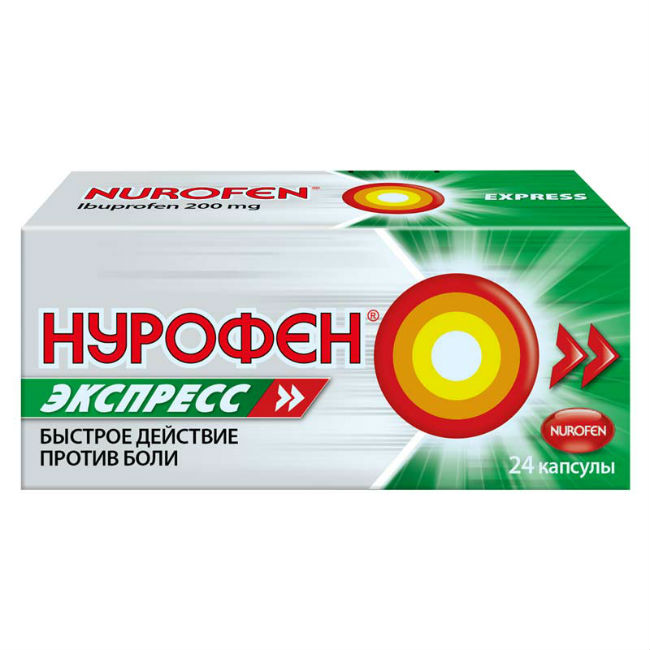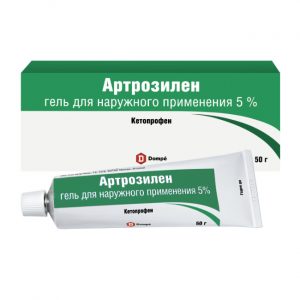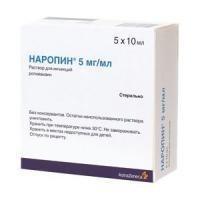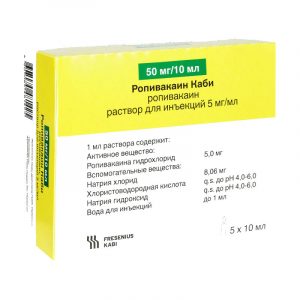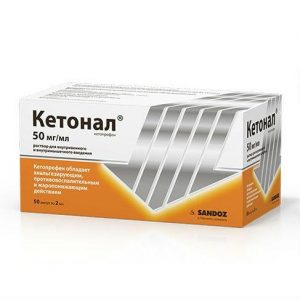Description
Pharmacological action
Pharmacological action – anti-inflammatory, analgesic, antipyretic.
Pharmacodynamics
The mechanism of action of ibuprofen, a derivative of propionic acid from the NSAID group, is due to inhibition of the synthesis of PG – mediators of pain, inflammation and hyperthermia. Indirectly blocks COX-1 and COX-2, as a result of which it inhibits the synthesis of GHGs. It has a quick directed action against pain (analgesic), antipyretic and anti-inflammatory effect. Moreover, ibuprofen reversibly inhibits platelet aggregation. The analgesic effect of the drug lasts up to 8 hours.
Pharmacokinetics
Absorption – high, rapidly and almost completely absorbed from the digestive tract. After taking 2 caps. fasting drug ibuprofen is detected in blood plasma after 15 minutes. Cmax of ibuprofen in blood plasma is reached after 30 ² 40 min, which is two times faster than after taking the equivalent dose of Nurofen ®, 200 mg coated tablets in the dosage form. Taking the drug with food can increase Tmax.
Communication with blood plasma proteins – 90%, T1 / 2 – 2 hours. Slowly penetrates into the joint cavity, is retained in the synovial fluid, creating higher concentrations in it than in blood plasma. After absorption, about 60% of the pharmacologically inactive R-form slowly transforms into the active S-form. It is metabolized in the liver. It is excreted by the kidneys (unchanged no more than 1%) and to a lesser extent with bile.
In the elderly, there were no significant differences in the pharmacokinetic profile of the drug compared to younger people. In limited studies, ibuprofen was found in breast milk at very low concentrations.
Indications
Nurofen ® Express is used for headaches, migraines, toothaches, painful menstruation, neuralgia, back pain, muscle and rheumatic pains for fevers with flu and colds.
Contraindications
Hypersensitivity to ibuprofen or any of the components that make up the
preparation, complete or incomplete combination of bronchial asthma, recurrent nasal polyposis and paranasal sinuses and intolerance to acetylsalicylic acid or other NSAIDs (in. history)
erosive and ulcerative diseases of the gastrointestinal tract in the acute stage (including peptic ulcer of the stomach and duodenum, Crohn’s disease, ulcerative colitis) or ulcerative bleeding in the active phase or history (two or more confirmed episodes of peptic ulcer or peptic ulcer bleeding)
history of bleeding or perforation of a gastrointestinal ulcer provoked by the use of NSAIDs
severe renal failure (Cl creatinine <30 ml / min), confirmed hyperkalemia decompensated heart failure It is since the aortocoronary bypass cerebrovascular bleeding or otherwise fructose intolerance haemophilia and other bleeding disorders (including hypocoagulation) hemorrhagic diathesis pregnancy (III trimester) children under 12 years old. Caution: in the presence of the conditions indicated in this section, you should consult your doctor before using the drug – the simultaneous administration of other NSAIDs, the presence of a single history of gastric ulcer or gastrointestinal ulcer bleeding gastritis, enteritis, colitis, the presence of Helicobacter pylori infection, ulcerative colitis asthma or allergic diseases in the acute stage or in the anamnesis – the development of bronchospasm is possible systemic lupus erythematosus or mixed connective tissue disease (syndrome Sharpe) increased risk of aseptic meningitis renal failure, including during dehydration (creatinine Cl less than 30-60 ml / min) nephrotic syndrome liver failure cirrhosis with portal hypertension hyperbilirubinemia arterial hypertension and / or heart failure cerebrovascular diseases blood diseases of unknown etiology (leukopenia and anemia) severe somatic diseases dyslipidemia diabetes peripheral arteries smoking frequent alcohol use phenylketonuria or phenylalanine intolerance concomitant use of drugs which may increase the risk of ulcers or bleeding, in particular, oral corticosteroids (including prednisone), anticoagulants (including warfarin), SSRIs (including citalopram, fluoxetine, paroxetine, sertraline) or antiplatelet agents (including acetylsalicylic acid, clopidogrel) pregnancy, I II trimester breastfeeding old age. Special instructions It is recommended that you take the drug as soon as possible and in the minimum effective dose necessary to eliminate the symptoms. In patients with bronchial asthma or an allergic disease in the acute stage, as well as in patients with a history of bronchial asthma / allergic disease, the drug can provoke bronchospasm. The use of the drug in patients with systemic lupus erythematosus or mixed connective tissue disease is associated with an increased risk of developing aseptic meningitis. During prolonged treatment, monitoring of the peripheral blood picture and the functional state of the liver and kidneys is necessary. When symptoms of gastropathy appear, careful monitoring is indicated, including esophagogastroduodenoscopy, general blood test (determination of Hb), fecal occult blood test. If it is necessary to determine 17-ketosteroids, the drug should be discontinued 48 hours before the study. Ethanol is not recommended during treatment. Patients with renal failure should consult a doctor before using the drug, since there is a risk of impaired renal function. Patients with hypertension, including in the anamnesis, and / or CHF, it is necessary to consult a doctor before using the drug, since the drug can cause fluid retention, increased blood pressure and swelling. Information for women planning a pregnancy: these drugs suppress COX and GHG synthesis, affect ovulation, disrupting female reproductive function (reversible after discontinuation of treatment). Influence on ability to steer vehicles, mechanisms. Patients who report dizziness, drowsiness, lethargy, or visual impairment while taking ibuprofen should avoid driving vehicles or operating machinery. Composition active substance: ibuprofen 200 mg excipients: macrogol 600 – 218.33 mg potassium hydroxide – 25.6 mg water – 17.07 mg capsule shell: gelatin – 119.8 mg sorbitol 76% solution – 58.19 mg dye crimson (Ponceau 4R ) (EI24) – 0.485 mg water – 15.02 mg white ink Opacode WB NS-78-I801I (water – 48%, titanium dioxide (E171) – 29%, propylene glycol – 10%, isopropapol – 8%, hypromellose – 5%) Dosage and administration Adults and children over 12 years of age: Inside, 1 capsule (200 mg), without chewing, up to 3-4 times a day. The capsule should be washed down with water. The interval between doses of the drug should be 6-8 hours. To achieve a faster therapeutic effect in adults, a single dose can be increased to 2 capsules (400 mg) up to 3 times a day. The maximum daily dose is 1200 mg. The maximum daily dose for children 12-17 years old is 1000 mg. If, after taking the drug for 2 3 days, symptoms persist or intensify, stop treatment and consult a doctor. Side effects The risk of side effects can be minimized if you take the drug in a short course, at the minimum effective dose needed to eliminate the symptoms. Elderly people have an increased incidence of adverse reactions with NSAIDs, especially gastrointestinal bleeding and perforations, in some cases fatal. Side effects are predominantly dose dependent. In particular, the risk of developing gastrointestinal bleeding depends on the dose range and on the duration of treatment. The following adverse reactions were observed with short-term use of ibuprofen in doses not exceeding 1200 mg / day (3 tablets). In the treatment of chronic conditions and prolonged use, other adverse reactions may occur. The frequency of adverse reactions was estimated based on the following criteria very often ( 1/10) often ( 1/100 to <1/10) infrequently ( 1/1000 to <1/100) rarely ( 1 / 10000 to <1/1000) is very rare (< 1/10000) frequency is unknown (frequency estimation data are not available). From the blood and lymphatic system: very rarely – hematopoiesis (anemia, leukopenia, aplastic anemia, hemolytic anemia, thrombocytopenia, pancytopenia, agranulocytosis). The first symptoms of these disorders are fever, sore throat, superficial oral ulcers, flu-like symptoms, severe weakness, nosebleeds, and subcutaneous hemorrhages, bleeding, and bruising of unknown etiology. From the side of the immune system: infrequently – hypersensitivity reactions – non-specific allergic and anaphylactic reactions, reactions from the respiratory tract (bronchial asthma, including its aggravation, bronchospasm, shortness of breath, dyspnea), skin reactions (itching, urticaria, purpura, Quincke’s edema, exfoliative and bullous dermatoses, including toxic epidermal necrolysis (Lyell syndrome), Stevens-Johnson syndrome, erythema multiforme), allergic rhinitis, eosinophilia are very rare – severe hypersensitivity reactions, incl. swelling of the face, tongue and larynx, shortness of breath, tachycardia, arterial hypotension (anaphylaxis, Quincke’s edema or severe anaphylactic shock). From the gastrointestinal tract: infrequently – abdominal pain, nausea, dyspepsia (including heartburn, bloating) rarely – diarrhea, flatulence, constipation, vomiting very rarely – peptic ulcer, perforation or gastrointestinal bleeding, melena, bloody vomiting, in some cases with a fatal outcome, especially in elderly patients, ulcerative stomatitis, gastritis, frequency is unknown – exacerbation of colitis and Crohn’s disease. From the liver and biliary tract: very rarely – impaired liver function, increased activity of hepatic transaminases, hepatitis and jaundice. From the side of the kidneys and urinary tract: very rarely – acute renal failure (compensated and decompensated) especially with prolonged use, combined with an increase in the concentration of urea in the blood plasma and the appearance of edema, hematuria and proteinuria, nephritic syndrome, nephrotic syndrome, papillary necrosis, interstitial nephritis, cystitis. From the nervous system: infrequently – headache very rarely – aseptic meningitis. From the CCC side: the frequency is unknown – heart failure, peripheral edema, with prolonged use, the risk of thrombotic complications (eg myocardial infarction) is increased, and blood pressure increases. From the respiratory system and mediastinal organs: frequency unknown – bronchial asthma, bronchospasm, dyspnea. Laboratory indicators: hematocrit or Hb (may decrease) bleeding time (may increase) plasma glucose concentration (may decrease) creatinine clearance (may decrease) plasma creatinine concentration (may increase) hepatic transaminase activity (may increase). If side effects occur, you should stop taking the drug and consult a doctor. Overdose of In children, overdose symptoms may occur after taking a dose exceeding 400 mg / kg. In adults, the dose-dependent effect of an overdose is less pronounced. T1 / 2 of the drug in case of an overdose is 1.5 3 hours. Symptoms: nausea, vomiting, pain in the epigastric region or less often – diarrhea, tinnitus, headache and gastrointestinal bleeding. In more severe cases, manifestations of the central nervous system are observed: drowsiness, rarely – agitation, convulsions, disorientation, coma. In cases of severe poisoning, metabolic acidosis and an increase in PV, renal failure, damage to liver tissue, decreased blood pressure, respiratory depression and cyanosis can develop. In patients with bronchial asthma, an exacerbation of this disease is possible. Treatment: symptomatic, with mandatory airway management, ECG monitoring and basic vital signs up to the normalization of the patient’s condition. Oral administration of activated charcoal or gastric lavage for 1 hour after taking a potentially toxic dose of ibuprofen is recommended. If ibuprofen has already been absorbed, an alkaline drink may be prescribed to excrete the acid derivative of ibuprofen by the kidneys, forced diuresis. Frequent or prolonged seizures should be stopped in / in the introduction of diazepam or lorazepam. If bronchial asthma worsens, the use of bronchodilators is recommended. Storage conditions At a temperature not exceeding 25 ° C. Keep out of the reach of children. Expiration 2 years. Deystvuyuschee substances Ibuprofen dosage form capsules Indications From sciatica, From arthrosis and arthritis, From lumbago, Flu, Cold, From periarthritis, From migraines, Angina
